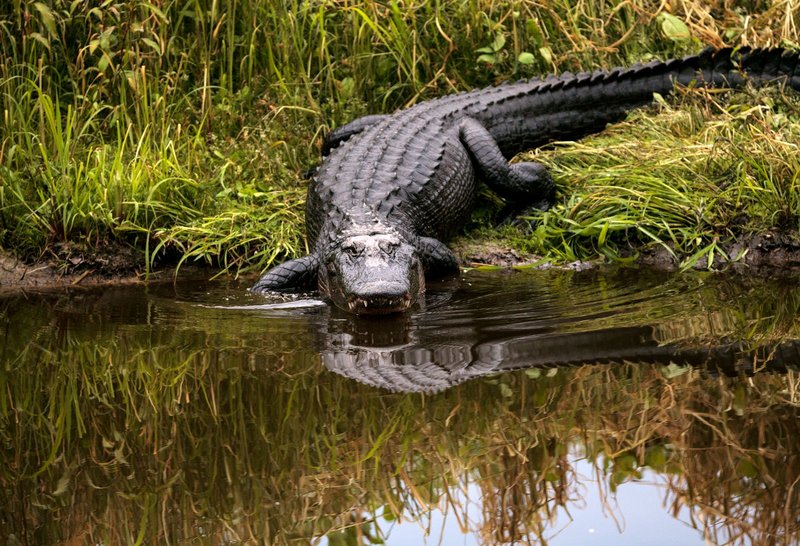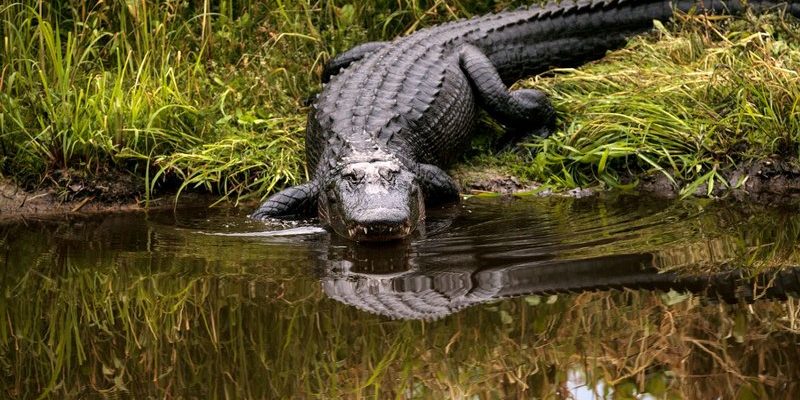
So, grab a cup of coffee, and let’s dive into the extraordinary evolutionary journey of the American alligator. We’ll explore how these remarkable reptiles developed their unique characteristics, how they adapted to their environments, and what their story tells us about the world around us.
A Brief Overview of Alligator Evolution
The American alligator (Alligator mississippiensis) is a key player in the family of Crocodylia, which also includes crocodiles, caimans, and gharials. To truly appreciate the alligator, it’s helpful to understand its ancestors. Alligators belong to a lineage that dates back an incredible 200 million years, placing their ancestors alongside the dinosaurs. Isn’t that mind-blowing?
Let me explain: the earliest crocodyliforms, from which modern alligators evolved, were small, agile creatures. They lived in diverse environments and gradually adapted to life in water and on land. Over millions of years, these early reptiles evolved various traits that would help them survive in different conditions. They became powerful swimmers with strong tails and the ability to hold their breath for extended periods, which you still see in alligators today.
Interestingly, while dinosaurs were strutting their stuff on land, the alligator’s ancestors were honing their aquatic skills. This duality of life—land and water—has remained a hallmark of alligators, allowing them to thrive in diverse ecosystems.
The Rise of the Alligator: Adaptations and Traits
As the Earth’s climate and environments changed, so did the alligator. This adaptability is one of the key reasons why they’ve survived through major extinction events. American alligators are equipped with unique traits that have allowed them to flourish in various habitats, from freshwater lakes to swamps.
One major adaptation is their strong, muscular tails. This feature not only powers their swimming but also acts as a weapon against predators and rivals. They can propel themselves with surprising speed, allowing them to become effective hunters, often ambushing their prey.
Another critical trait is their powerful jaws. Alligators possess some of the strongest bites in the animal kingdom, capable of crushing bones. They have a unique set of teeth that keep growing throughout their life—how cool is that? If a tooth falls out, a new one quickly takes its place, ensuring they are always ready for their next meal.
The Impact of Climate on Alligator Evolution
Climate has played a significant role in shaping alligator evolution. Alligators thrive in warm, humid environments, which is why they are primarily found in the southeastern United States. But did you know that in the past, they were also found as far north as the Arctic?
During periods of warmer climate, like the Eocene epoch—about 56 to 34 million years ago—alligators expanded their range significantly. They adapted to these changing temperatures, developing features that helped them cope with both heat and cooler climates.
On the flip side, during colder periods, alligators faced challenges. They learned to enter a state of dormancy during winter months. This ability to adjust their metabolism allows them to survive when food is scarce and temperatures drop.
American Alligators in Today’s Ecosystems
Today, the American alligator is more than just a predator; it’s a keystone species in its ecosystem. They keep populations of fish and other wildlife in check, contributing to the health and balance of wetland environments.
When alligators dig holes in the mud, they inadvertently create small ponds. These ponds provide habitats for various species of fish and plants. It’s a beautiful example of how one animal can shape its environment and influence countless lives!
Moreover, alligators play a role in nutrient cycling. Their waste products enrich the water and soil, benefiting the entire ecosystem. So, you could say that each alligator is a natural gardener, helping to create and maintain the lush wetland environments we often admire.
Conservation Efforts and the Future of Alligators
Despite being a resilient species, American alligators have faced significant threats due to habitat loss and hunting. Over the years, their populations dwindled dramatically. However, thanks to concerted conservation efforts, they’ve made a remarkable comeback. This success story isn’t just about protecting one species; it reflects the interconnectedness of all life.
Efforts to preserve wetlands, enforce hunting regulations, and promote sustainable practices are crucial for the future of alligators. Organizations and local communities are working together to ensure these magnificent reptiles continue to thrive.
But here’s the thing: their survival hinges not only on conservation but also on public education. When people learn about the importance of alligators in the ecosystem, they’re more likely to support efforts to protect them.
The American Alligator’s Place in Culture
The American alligator has a unique cultural significance, especially in the southern United States. From the bayous of Louisiana to Florida’s swamps, alligators have become symbols of resilience and power. They appear in folklore, art, and even sports teams’ mascots.
In many ways, alligators have woven themselves into the fabric of local culture. People have stories—whether it’s a family camping trip turned thrilling when an alligator appeared or the tension of spotting one while fishing. These narratives highlight the deep connection humans have with nature and the respect earned by this ancient reptile.
Plus, who can resist a good alligator-related joke? Just picture someone saying, “Why don’t alligators like fast food?” The punchline is, “Because they can’t catch it!” That blend of humor and awe shows how the alligator captures our imagination and keeps us curious.
Final Thoughts on the American Alligator
As we wrap up this journey through the evolutionary history of the American alligator, it becomes clear that these creatures are much more than fierce predators. They are living pieces of history, icons of survival, and essential players in our ecosystems.
Understanding their evolutionary journey helps us appreciate the intricate web of life and the importance of preserving it. The next time you spot an alligator lounging by the water, remember that it’s a survivor with a story that spans millions of years. They remind us of nature’s resilience and our responsibility to protect it for future generations.
So, whether you’re admiring one from a safe distance or simply reading about them from your cozy spot, take a moment to appreciate the intricate dance of evolution that has brought the American alligator into our world.

